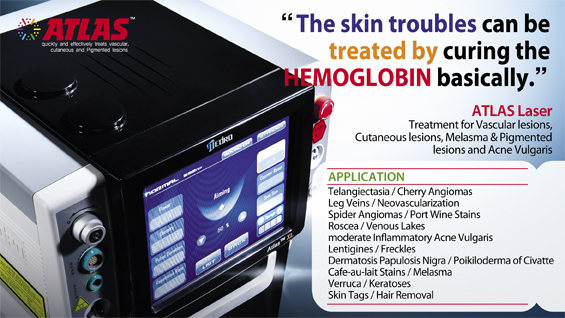▶ Previous Artlcle : #4-2. Treatment of Vitiligo
Intense Pulsed Light (IPL) is one of the most widely used devices in aesthetic procedures. Along with the CO₂ laser, it is a basic tool for dermatologists as well as all hospitals specializing in aesthetic procedures. The reason for IPL’s popularity is its versatility and simplicity of use.
Many skin conditions can be treated using only IPL. It is used in pigmentary lesions, erythema and small vessel treatment, as well as hair removal. It is also quite easy to use. The basic procedure follows application of cooling gel, setting of intensity according to operation guidelines and irradiation without overlap. With reasonable expectations and safe usage, problems such as side effects, etc. can be easily avoided and outcome can be satisfactory.
However, side effects of IPL are quite common and this causes psychological and financial damage to patients as well as doctors. I believe this is due to inadequate understanding of IPL. A doctor with insufficient experience and knowledge may increase the risk of side effects by over-ambitiously treating all lesions with IPL.
To minimize or avoid side effects, appropriate understanding of the IPL device and accurate knowledge of indications are necessary.
[Advertisement] ATLAS(Long pulse 532nm & 940nm dual wavelength) – Manufacturer: MEDRO(www.medro.net)
What is IPL?
IPL is a device that treats various skin conditions with a single or multiple pulses of intense light. Patients often wrongfully refer to it as ‘IPL laser’. However, IPL is not laser. Laser, by definition, is amplified light with single-wavelength and coherence. In Korea, the focus of IPL treatment is often pigmented lesions or erythema, whereas hair removal is the primary application in western countries.
Devices using a light source of multiple wavelengths were developed in the 1970s. This type of devices were intended for thermocoagulation of vascular anomaly. The introduction of selective photothermolysis in the early 1980s revolutionized the clinical application of optical devices. This was followed by rapid development of optical devices. IPL came into being in 1993 and was commercialized after the FDA approval in 1995. Other devices followed suit, allowing combination of IPL with laser or a high-frequency device.
IPL uses a light source of about 400~1200nm in wavelength. As shown in <Fig 1>, light in this range of wavelength can be absorbed into the major chromophores of skin – melanin and hemoglobin – as well as water. Therefore, IPL can selectively treat lesions of various depth and diameter in blood vessels, follicles and pigmentation using a proper cutoff filter. For example, using a cutoff filter of high wavelengths can be safe in patients with darker skin as it reduces light absorption by melanin and protects the epidermis. A cut-off filter of higher wavelengths deliver light of longer wavelengths inducing heat absorption by the moisture in the epidermis and promoting regeneration of collagen.

Fig 1. Absorption in different wavelengths of chromophore and wavelengths used based on clinical indications
-To be continued-
▶ Next Artlcle : #5-2. Understanding IPL





















